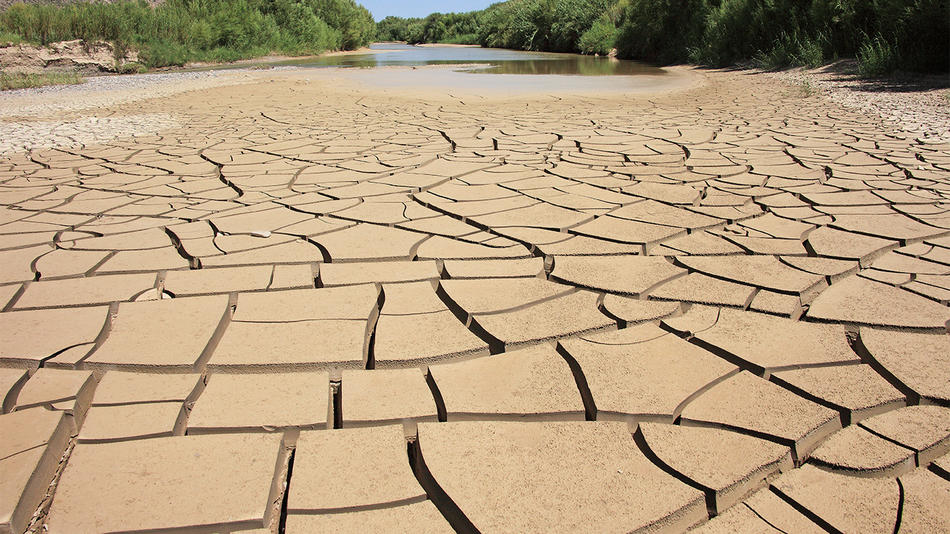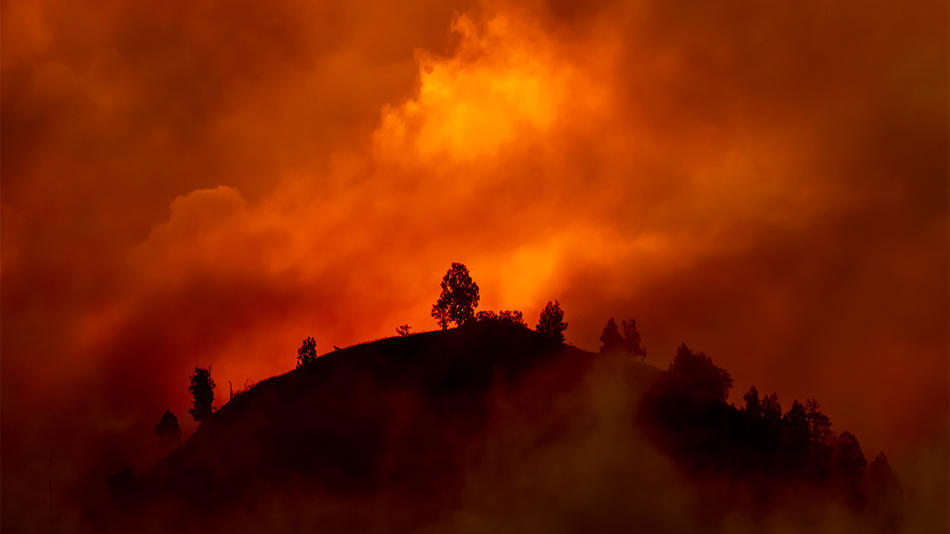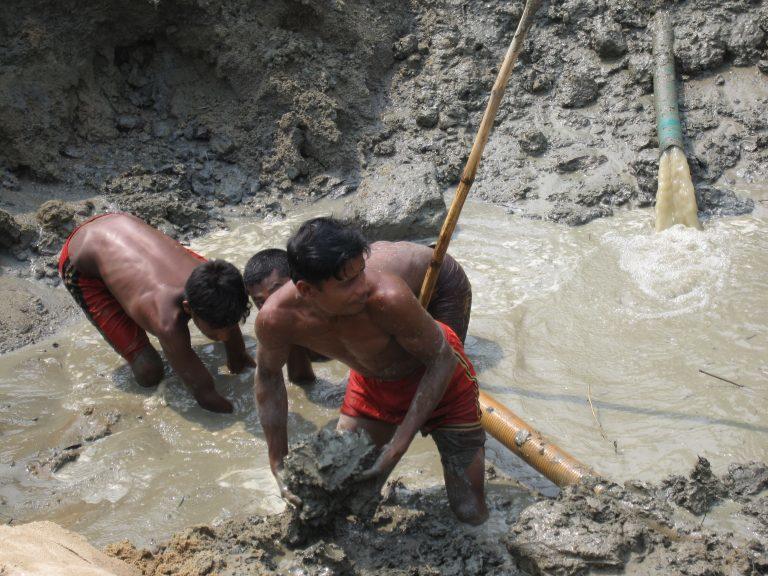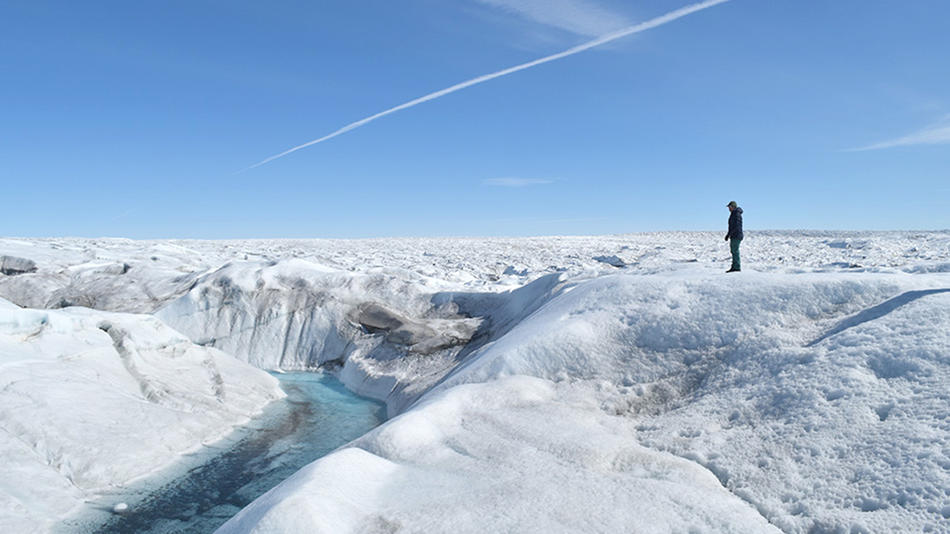As economic activity has slowed during the COVID-19 pandemic, the world has been given a tantalizing glimpse of what life could be like without fossil fuels: cities from New York to London to Beijing are enjoying cleaner air, and climatologists are reporting sharp declines in the amount of CO2 entering the atmosphere.
But the drop-off in greenhouse-gas emissions will have to be sustained in order to avoid the worst possible consequences of global warming, such as the submersion of coastal cities and massive human migration. “Even if we were to stop burning all fossil fuels today, it would take decades for the greenhouse gases we’ve already put into the atmosphere to dissipate and for global temperatures to stabilize,” says Columbia climatologist Marco Tedesco.
The big question now, experts say, is whether the US, China, and other large carbon emitters will be willing to move away from fossil fuels as they rebuild their economies. Whatever the outcome, three new Columbia studies on the impact of CO2 emissions illustrate what’s at stake.
Extreme drought may be the new normal
For nearly fifteen years, the western US has been suffering from a drought that has caused catastrophic wildfires and drinking-water shortages.
How much worse could the situation get? And to what degree is man-made climate change to blame?
Columbia scientists have been investigating these questions for years. For example, by analyzing tree rings, whose width and density vary according to climate conditions, they have sought to determine whether severe droughts have occurred in the region before, and if so, how long they lasted and what caused them.
Now, in their most comprehensive analysis to date, the Columbia researchers have concluded that the current drought is as bad or worse than any in the western US in recorded history. Since 800 AD, they say, there has been only one other drought, lasting from 1575 to 1603, that compares to the current one. That event, along with a handful of less severe multiyear droughts for which the scientists found evidence, was caused by cyclical changes in the earth’s ocean currents commonly called La Niña. But based on an analysis of huge quantities of modern weather data, the scientists calculate that global warming is equally responsible for the severity of the ongoing drought.
Since temperatures are projected to keep rising, it is likely that droughts will continue for the foreseeable future. “Because the planet is getting warmer, the dice are increasingly loaded toward longer and more severe droughts,” says lead author Park Williams, a Lamont climatologist. “We may get lucky and natural variability will bring more precipitation for a while. But going forward, we’ll need more and more good luck to avoid drought.” In fact, Williams says it is conceivable that the region could stay arid for centuries.
Lamont climatologist Richard Seager ’90GSAS was one of the first to suggest, in a 2007 paper, that global warming would eventually push the western US into a more arid climate. In 2015, his Lamont colleague Benjamin Cook led a follow-up study projecting that catastrophic droughts would become commonplace in the area by the end of the century.
Now, says Cook, it looks like his paper may have been overly optimistic. “It’s already happening,” he says.
Heat index is surpassing human tolerance
While most discussions of climate change revolve around intensifying floods, droughts, storms, and forest fires, scientists say we face a more direct threat to human survival. Extreme levels of heat and humidity, they warn, are threatening the lives even of strong, physically fit people in the tropics and subtropics.
A new Columbia study, based on detailed analysis of weather-station data from around the world, identifies hundreds of occasions in recent years in which the combined effects of heat and humidity have resulted in heat-index values reaching 125 degrees Fahrenheit or higher, making it dangerous for people to be active outdoors. (The heat index, or “feels-like” temperature, describes the cumulative impact of heat and humidity; the latter, by reducing the rate at which sweat evaporates off the skin, limits the body’s ability to cool itself.) Such episodes are now occurring regularly in India, Bangladesh, Pakistan, southern China, the Middle East, subtropical Africa, northwestern Australia, western Mexico, the Caribbean, and the southern United States — mainly in Texas, Louisiana, Mississippi, Alabama, and Florida.
The study also finds that the heat index has in recent years exceeded 160 degrees Fahrenheit — considered the absolute threshold of human tolerance, above which even someone relaxing in the shade with plenty of water would die of heat exhaustion — more than a dozen times in Saudi Arabia, Qatar, and the United Arab Emirates.
Prior studies failed to detect most of these events, because climate researchers usually look at averages of heat and humidity measured over large areas and over several hours at a time. The Columbia researchers instead drilled directly into hourly data collected at nearly eight thousand individual weather stations since 1979. This enabled them to pinpoint shorter-lived episodes of extreme heat and humidity, revealing that such episodes have doubled over the past four decades.
Additional research will be needed to understand the consequences of such torrid weather. But scientists say the effects are likely to be dire, in terms of both public health and economics. Other studies have shown that extreme heat caused at least 10,000 deaths in the US between 1999 and 2016, and that it disrupts commerce by forcing farmers, construction workers, and others indoors. As extreme-weather events become more frequent in the decades to come, they say, some parts of the world could become uninhabitable.
According to study coauthor and Lamont climate scientist Radley Horton ’07GSAS, “We may be closer to a real tipping point on this than we think.”
Glaciers face threats beyond rising temperatures
The Greenland ice sheet had its worst year on record in 2019, shrinking by some six hundred billion tons. The staggering loss of ice and consequent sea-level rise is part of a decades-long trend that is expected to raise the global watermark one to three feet by the century’s end.
But what exactly is causing the ice loss? Are skyrocketing Arctic temperatures the sole culprit, or are other climate forces at play? To answer that question, Marco Tedesco and his colleague Xavier Fettweis of the University of Liège used satellite data, ground observations, and climate models to analyze changes in the ice sheet during the summer of 2019. They discovered something alarming: the unprecedented ice loss was driven not just by rising temperatures in the region but by a shifting jet stream that in recent years has been blowing fewer clouds over Greenland, exposing the ice to more unfiltered sunlight and bringing it less replenishing snow. At the same time, new atmospheric circulation patterns are pulling pockets of balmy air up from lower latitudes.
“Imagine this vortex rotating in the southern part of Greenland, and it’s literally sucking in the moisture and heat of New York City, for example, and parking it in the Arctic,” says Tedesco, who is a Lamont Research Professor at the Lamont-Doherty Earth Observatory.
Because researchers have not yet accounted for these strange new circulation patterns in the computer simulations they use to make long-term climate projections for the Arctic, Tedesco says, the scientific community may be dramatically underestimating the rate at which Greenland’s ice sheet will shrink over the next few decades. “It’s almost like missing half the melting,” he says.
Gaining a more nuanced understanding of the ice sheet’s response to climate change is crucial, especially for coastal communities around the world that are considering expensive adaptation projects like erecting sea walls. The second-largest ice deposit on earth after Antarctica’s, the Greenland sheet contains enough frozen water to raise global sea levels more than twenty feet. And while it is not expected to melt away entirely for centuries, even small accelerations could be significant.
“The atmospheric changes we’ve observed seem to be related to, among other things, the disappearance of snow cover in Siberia, the melting of sea ice, and differences in the rates of warming in the Arctic versus the mid-latitudes,” Tedesco says. “They are likely to endure in the future.”






